Pierre-Alain Croset, Leonardo Zuccaro Marchi, Luca Capacci with Amir Adelfar, Francesca Diano, Alberto Geuna, Maria Chiara Giangregorio
(Politecnico di Milano, DAStU-Department of Architecture and Urban Studies)
For the second consecutive year, the Architectural Design Studio was organized as an international collaborative class with the Institute of Architecture Technology at the Technical University Graz (TUG), with the participation of the teachers Marisol Vidal and Martin Boleš. Students and teachers from PoliMI and TUG operated in the parallel Design Studios of the respective Masters in Architecture. The collaboration fostered a fruitful interchange of discussions among the students to elaborate their on-site analysis and design. Overall, this collaboration helped to share different teaching approaches between PoliMI and TUG towards a more international exchange of pedagogical methods. In addition, the enrolled students were mainly international, coming from more than 20 different countries, bringing their cultural and educational backgrounds for engaging discussion and design proposals.
The Design Studio actively encouraged collaboration with local institutions and architects to ground the design proposals as much as possible in the real socio-political-urban conditions of Rijeka. We activated direct partnerships with the DeltaLab (https://deltalab.hr/en/about-us/) – organized by the Center for Urban Transition, Architecture and Urbanism at the University of Rijeka (led by Ida Križaj Leko) – which developed outstanding research activities on the urban history of Rijeka and organized the main exhibitions and cultural activities of Rijeka 2020 “European Capital of Culture”.
From “Fiume Fantastika” in Rijeka to “Croatia Fantastika” in Milano
Rijeka is located in western Croatia, on the coast of Kvarner Gulf, in the northern part of the Adriatic Sea. Rijeka is Croatia's principal seaport and the third largest city after Zagreb and Split. Thanks to its strategic position and deep-water port, the city was furiously contested, changing sovereigns and demographics over centuries. The city shifted and polarised several religious, linguistic, and national identities, which amalgamated inside the urban structure. A pivotal example was the duality the city faced during the World War, between Fiume and Sušak, which were merged into the city of Rijeka in 1948. In light of this plurality of diversity that is still present and valuable to be considered, in 2020, Rijeka was nominated the European Capital of Culture.
As part of Project Rijeka 2020 – the European Capital of Culture – and answering to Sarkis' Venice Biennale "How will we live together" (2021), the university platform DeltaLab prompted to investigate the complexity and contradictions of Fiume/Rijeka looking at its "fantastic zones" and "exciting, contradictory, arbitrary and sometimes unstable urban systems" (Mimica, Mrduljaš, Turato, 2021) which characterise the Croatian port city of Rijeka. As a result, DeltaLab condensed their research in the publication "Fiume Fantastika" (edited by Vedran Mimica, Maroje Mrduljaš, Idis Turato, University of Rijeka – Oaza Books, 2021). The book critically illustrates the urban-architectural development in the "fantastic" setting of the political-social ambivalence of Rijeka. Hence, it became the primary source of inspiration and profound knowledge regarding the city's existing conflicts and potentialities for the design studio's students and teachers.
Following the broad and deep discussion of the book, in Spring 2023, we organised a series of seminars at Politecnico di Milano to engage students and colleagues directly and concretely in understanding critical and pivotal experiences of contemporary architecture and historical-critical readings in Croatia. Relying on "Fiume Fantastika" in Rijeka, the seminar "Croatia Fantastika" at PoliMI (organised by Pierre Alain Croset, Leonardo Zuccaro Marchi, Luka Skansi, between April and June 2023) aimed to further trace critical perspectives and reflections. The seminar combined contemporary architectural experiences in Croatia (Hrvoje Njiric, Idis Turato), the development of a historiographical and critical apparatus of the legacy of the Croatian Modern (Maroje Mrduljaš) and a comparison of new radical pedagogies and multidisciplinary research centres linked to the creation territory and beyond (Vedran Mimica, Ida Križaj Leko, Leo Modrčin).
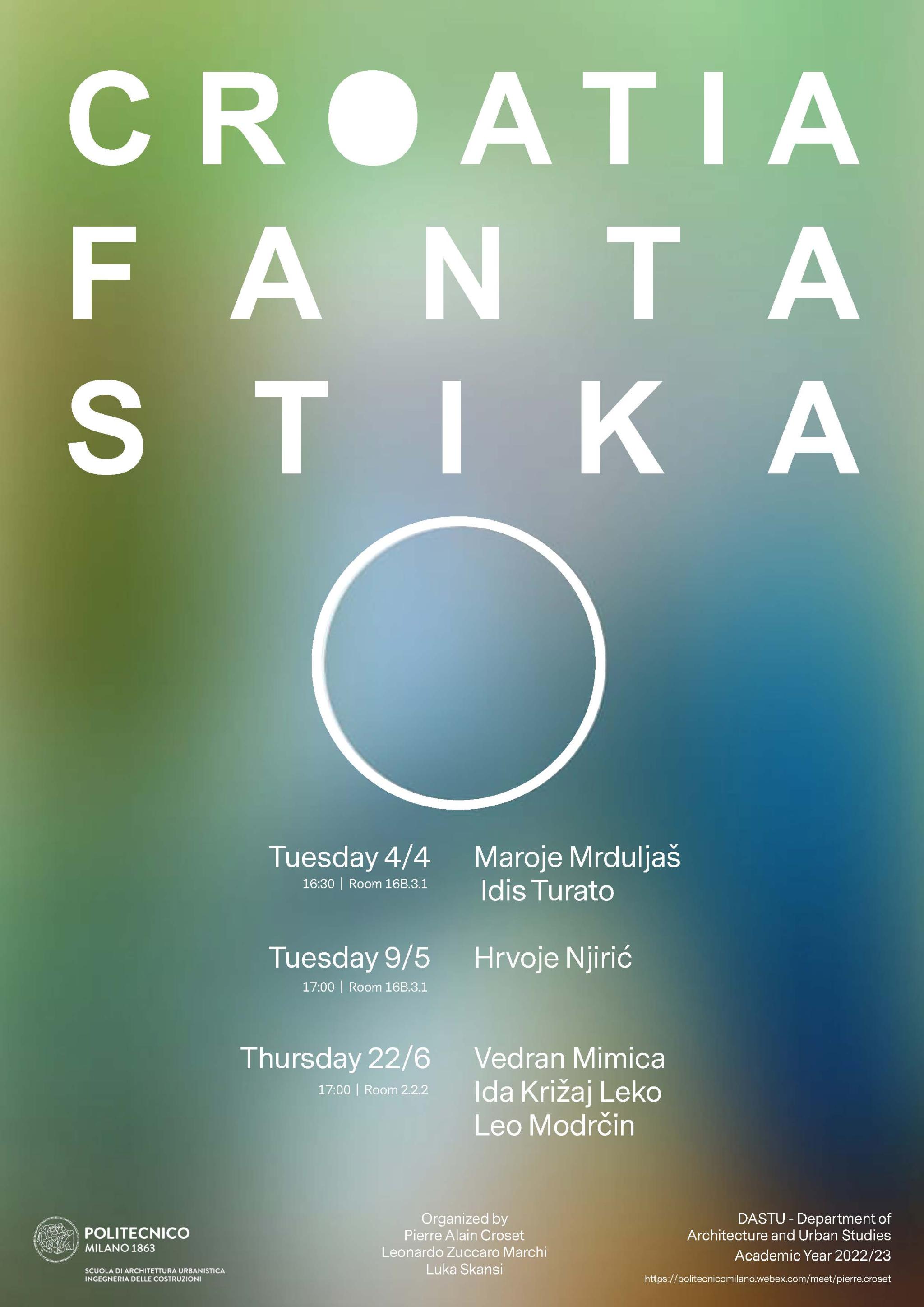
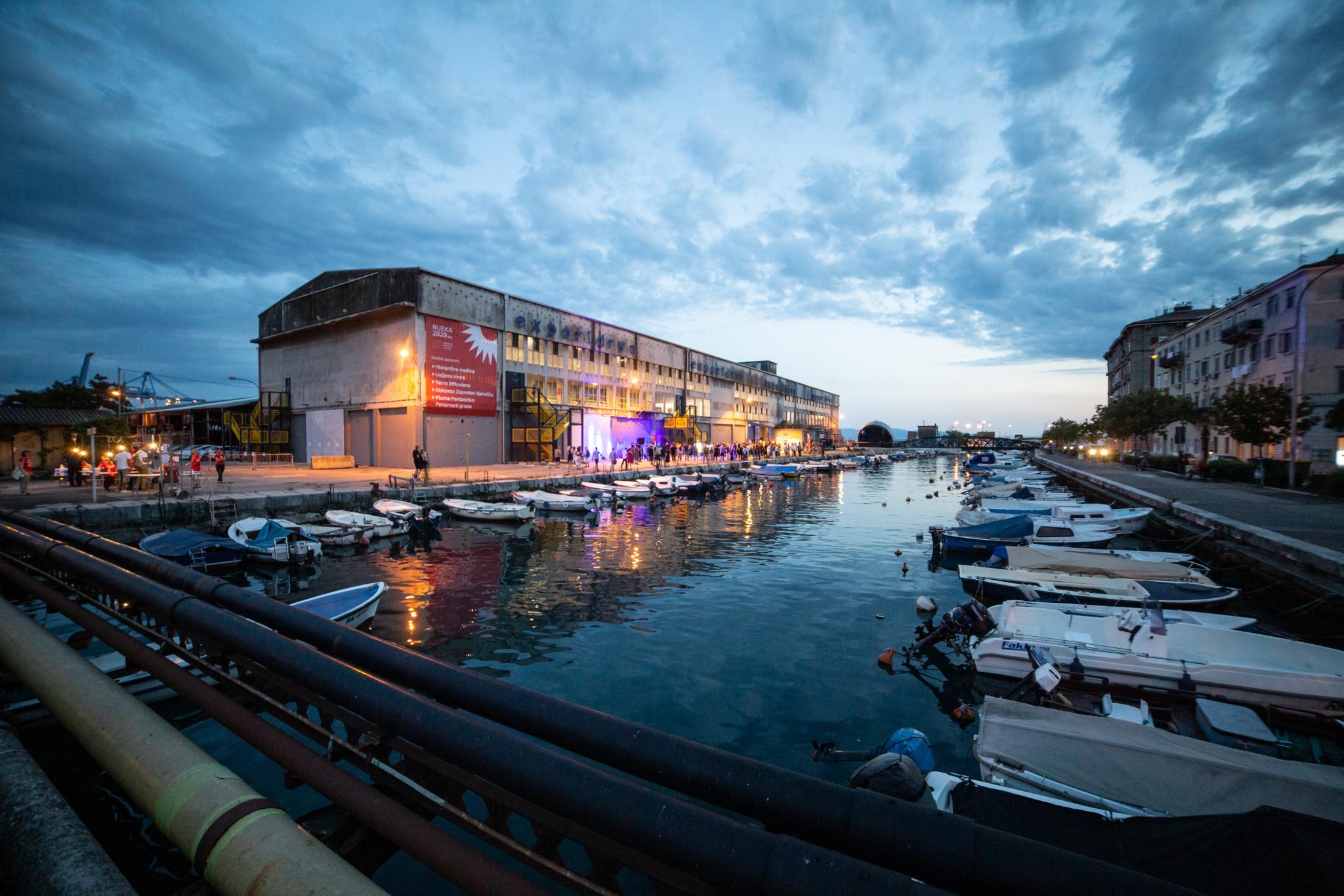
Students research projects at the waterfront: Delta and Mlaka
Following the post-pandemic condition, the Architectural Design Studio at Politecnico di Milano relied on the assumption that there is a growing and urgent demand for social gathering spaces with intergenerational programs and a mix of cultural and physical well-being activities. Students had to tackle this contemporary urgency by reflecting upon and designing a program for a complex building with mixed cultural and sporting functions organized as a vertical city. We proposed to name this new type of building a “post-pandemic cultural and sports hub”. This vertical social condenser was aimed to become a new landmark on the waterfront of Rijeka, tracing a new profound identity of the city. The design task opened new research questions on the relation between the city and the harbour, the legacy and heritage of the port’s structures, and the equilibrium between Rijeka’s historical clashes and future uncertainties.
As preliminary activity, students tackled the typological complexity of the vertical social condenser. They compared and deeply investigated several pivotal complex modern buildings in Rijeka, such as for example the Department Store Ri (1969-72) and the Sušak Skyscraper (1947), together with contemporary hyper-hybrid projects and SESC (Serviço Social do Comércio) buildings. The latter have proliferated in São Paulo (Brazil) since the 1960s as epitomes of multi-programmatic buildings for all ages, directly inspired by the "social condenser" idea of the Russian Constructivists in the Soviet Union in the 1920s. After this comparative research phase, students had to propose a conceptual design for a prototype building, defining the volumes, internal distribution, organisation of the main functions, and structural design of critical horizontal and vertical members.
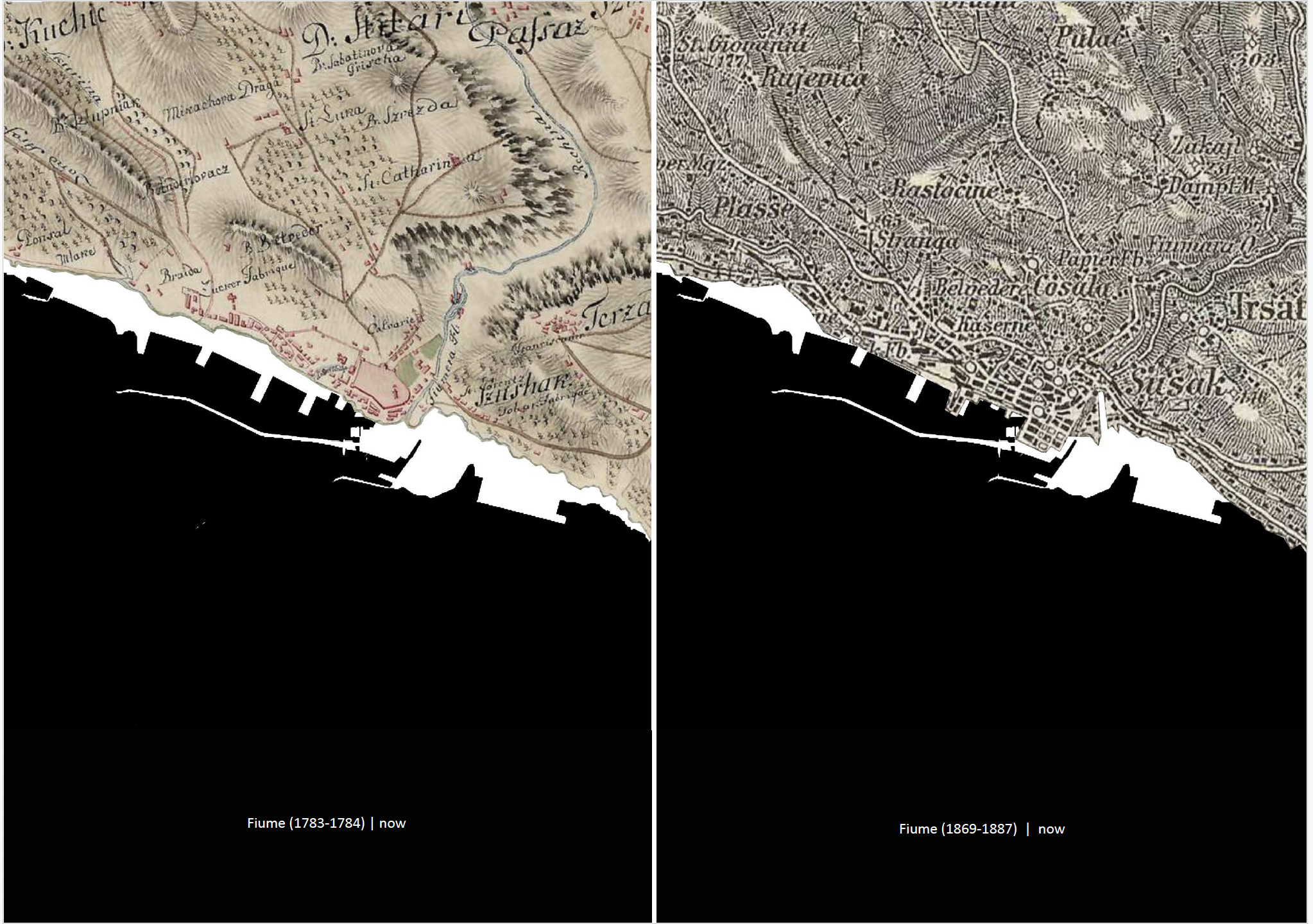
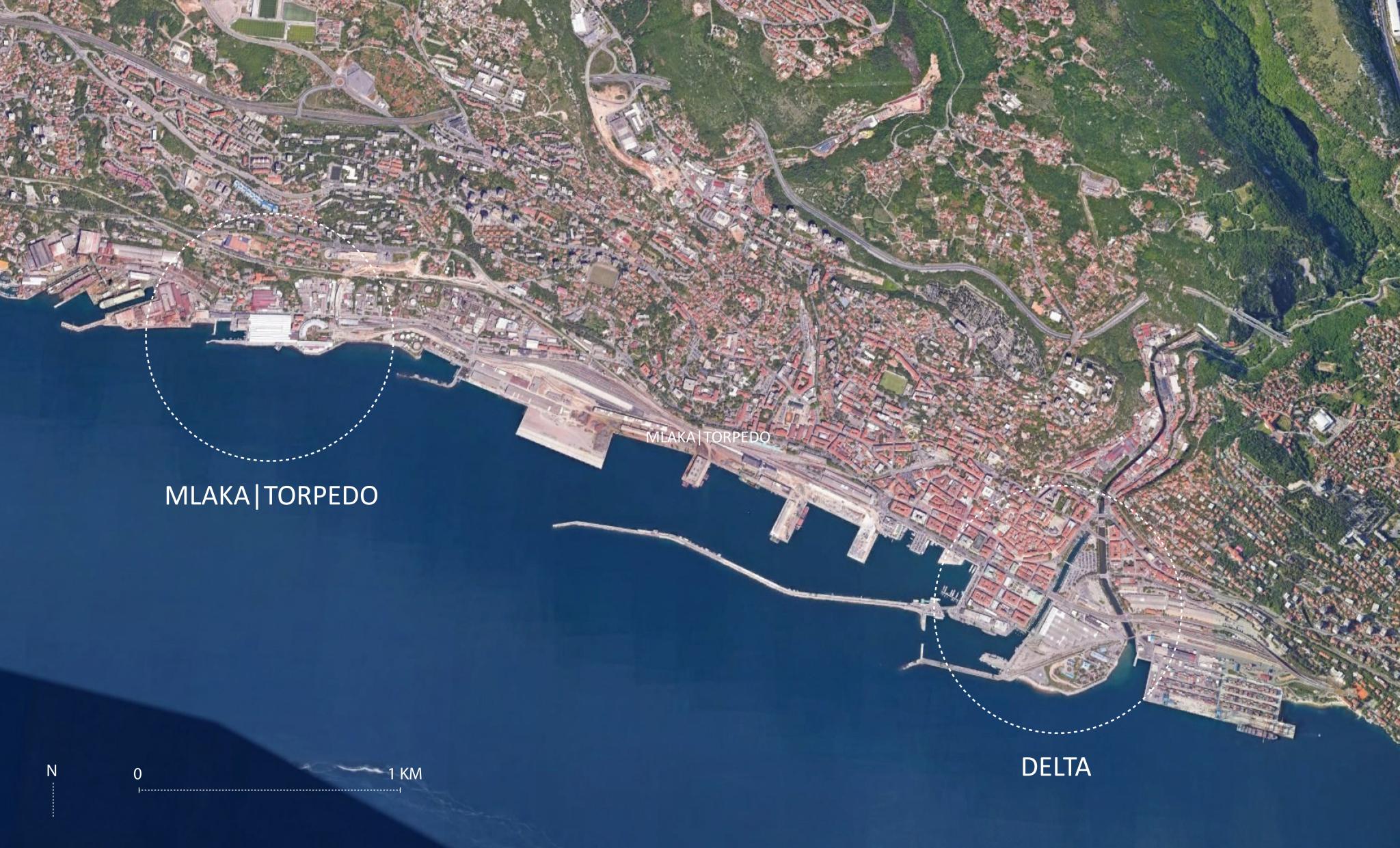
Two sites proposed to students concerned the waterfront of Rijeka: Delta and Mlaka. The Delta is an artificial peninsula located between Fiume and Susak, on the former political border between the west-Italian and east-Yugoslavian sides of the city. This political tension and legacy gained momentum and still resonates in the north, with the wide bridge-square named in memory of Tito, the authoritarian president and contradictory dictator of Yugoslavia.
As one of the proposed areas for the construction of the building, the students considered the drop-form island of Delta that is part of the reclaimed land of the harbor. Different sweet and salty water streams frame it: it is embraced by the Rječina River to the east, a port "dead canal" to the west, and an abandoned industrial waterfront to the south. Delta hosts a broad spectrum of social, cultural, and productive activities influenced by the diverse identities of the area's waterfronts and industrial heritage. The southern part hosts warehouse shelters that were formerly used to dry wood thanks to the strong wind called "bora", which blows from the hills towards the sea. The direction of the strong wind also dictated the development of Expodrvo, a linear industrial building structure also used as a sort of wind corridor to dry wood and now transformed into a cultural hub of Rijeka for exhibitions and musical and stage performances.
Facing these "fantastic" urban-historical-landscape conditions, PoliMI students investigated several strategies for the development of the area, positioning the vertical social condenser in synergy with the existing structures and blending the heritage of the past with the innovation of a progressive social revitalisation of the site, in the aftermath of the global pandemic.
Student Maria El Tabib cut the warehouse roof, placed a spine building beside Expodrvo, and raised a new landmark towards the north, facing the dual city Fiume-Susak. The tower acts as a focal point between Expodrvo's existing cultural heritage and the empty sheds that will now host the extension of the social condenser's sports activities. Student Kazi Akif placed the tower in direct relation to the shelters, but towards the eastern public space and industrial harbour rather than with Expodrvo. Typologically, he opted for two central internal functional cores, which bear volumes separated by linear voids. Expansive terraces enhance the social interaction within the building and foster brand-new visual interactions with the waterfront and the city at different height levels. Students Sara Ahmed Yehia Ahmed Sabry and Shubham Majumder aligned the tower towards the south in continuity with the Expodrvo spine, transforming it into a solid mass of multifaceted exhibitions. Both landmarks are structured with a mix of cultural and sports functions compressed by two external cores, guaranteeing high internal flexibility. Lastly, students Juan Carlos Hódar Egea and Iuliia Polulikh opted for external functional cores, with an extra external circulation that spirally rises from an artificial topography until the top of the tower with a look-out point, an urban eye towards the sea.
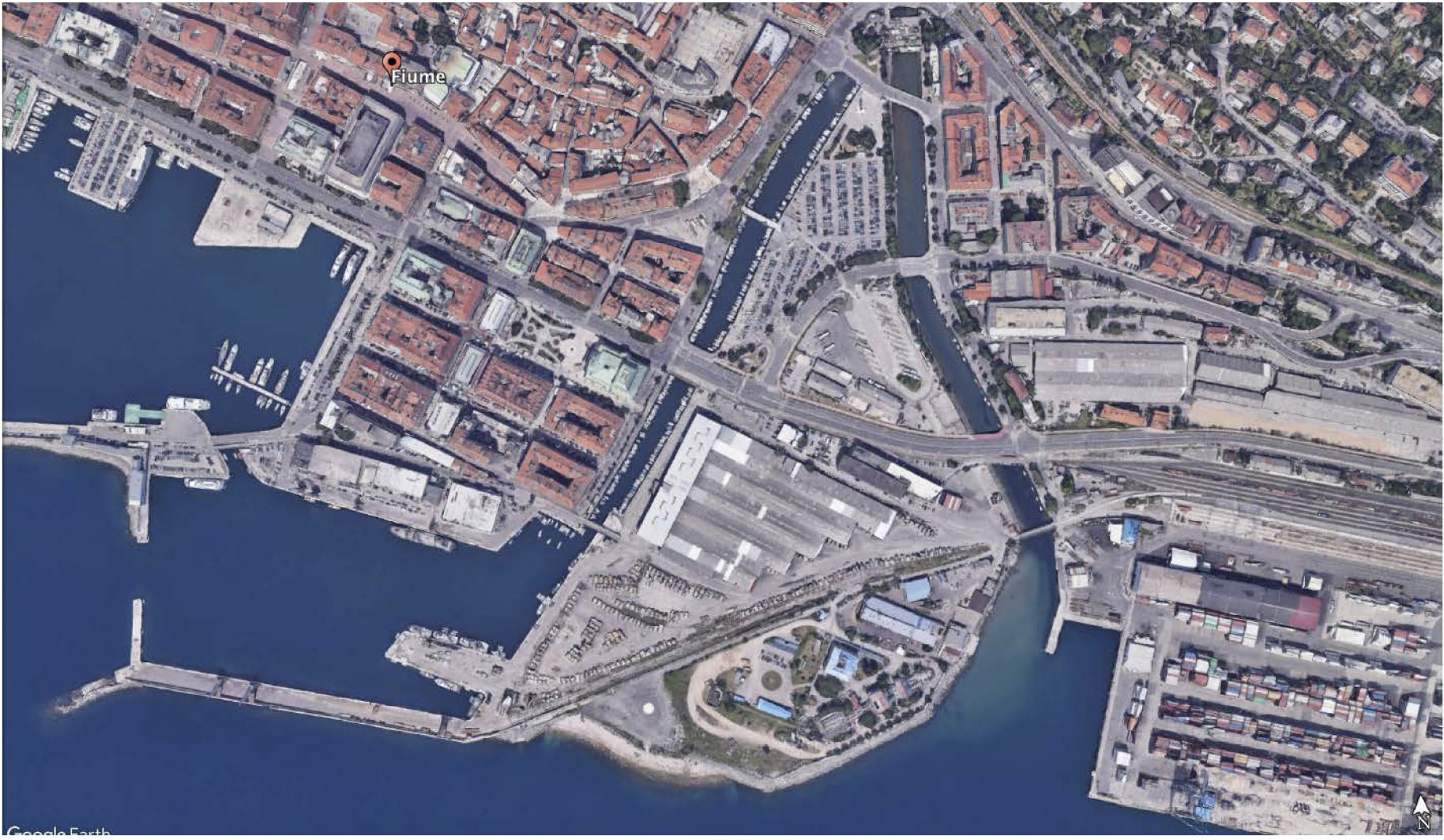
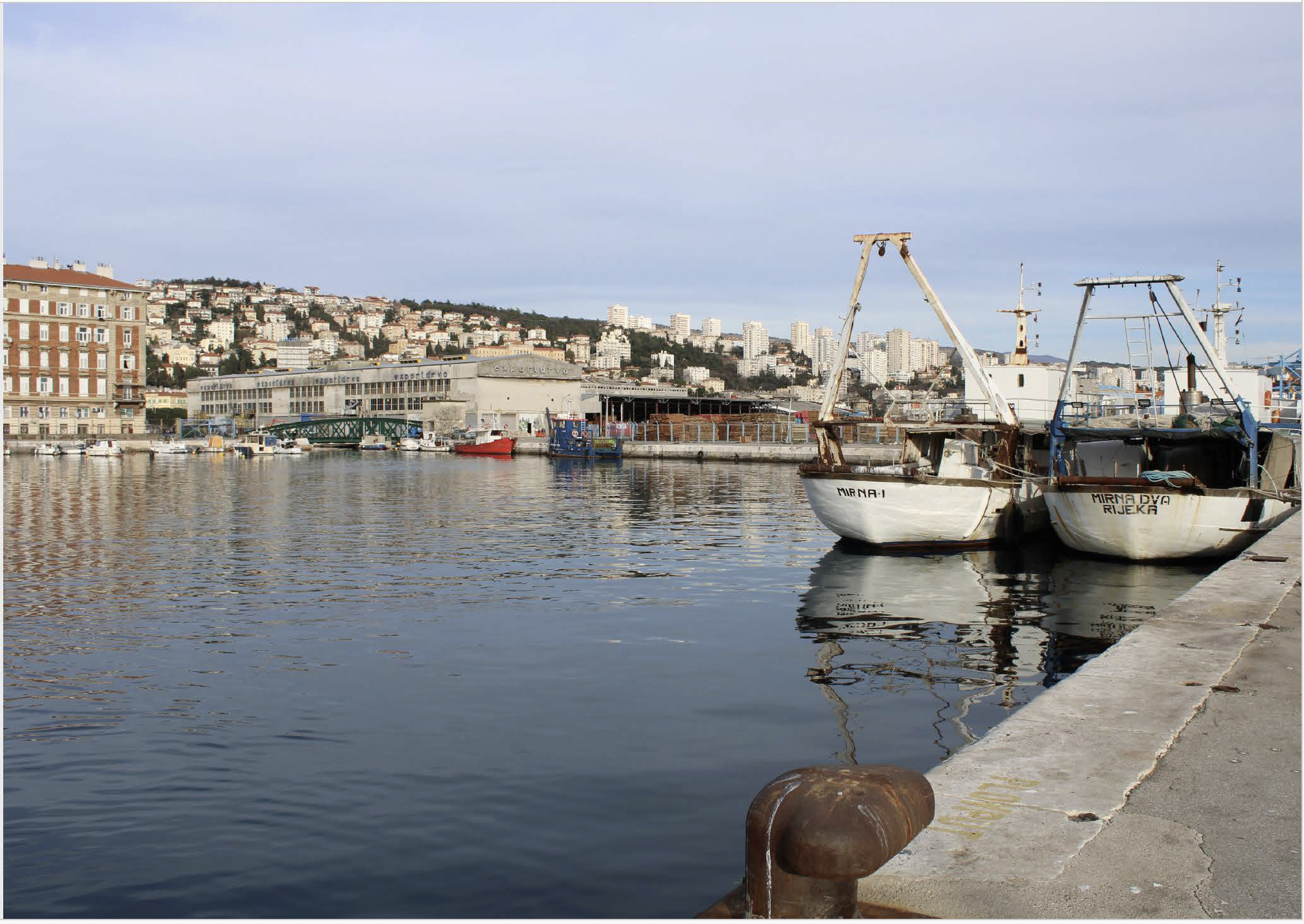
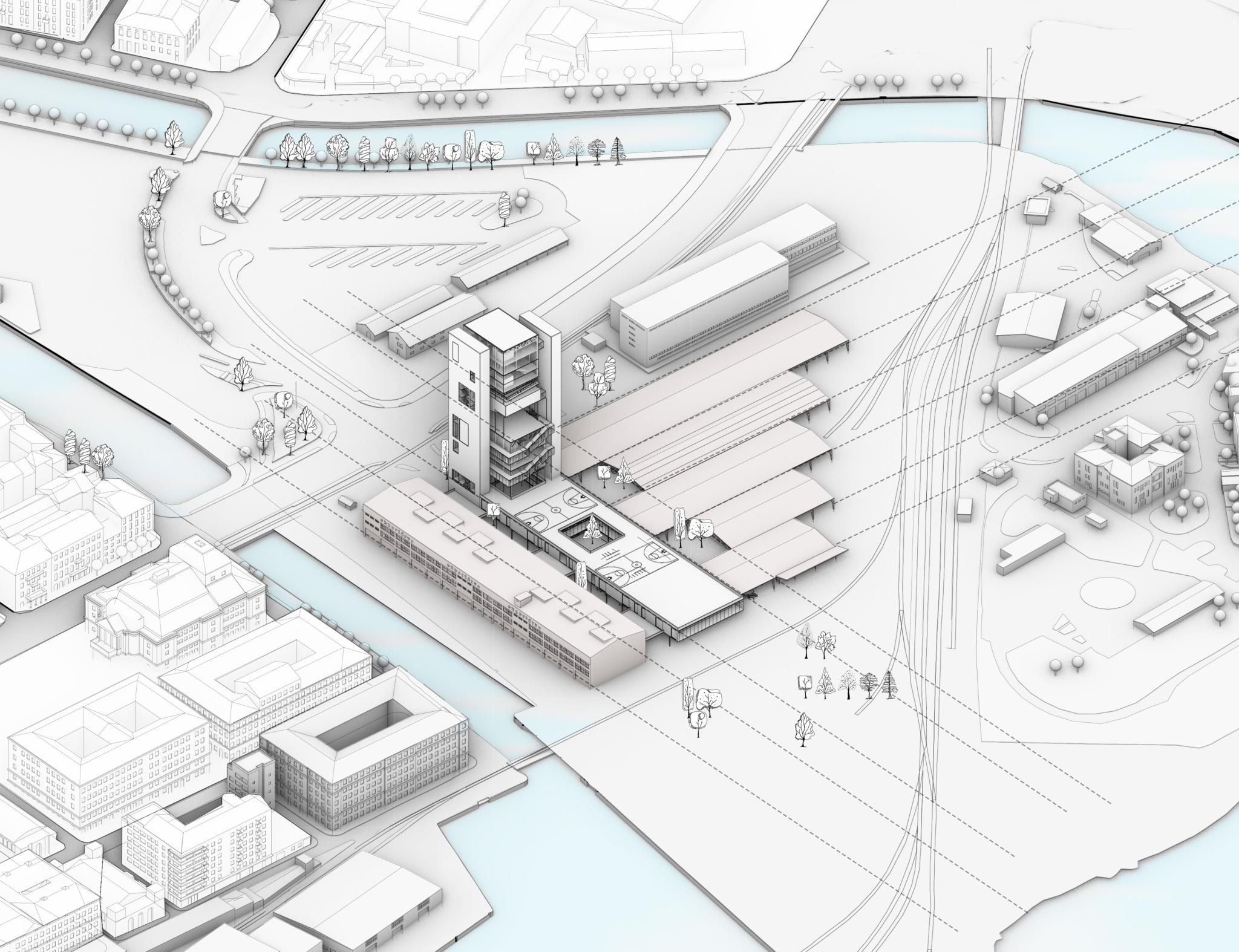
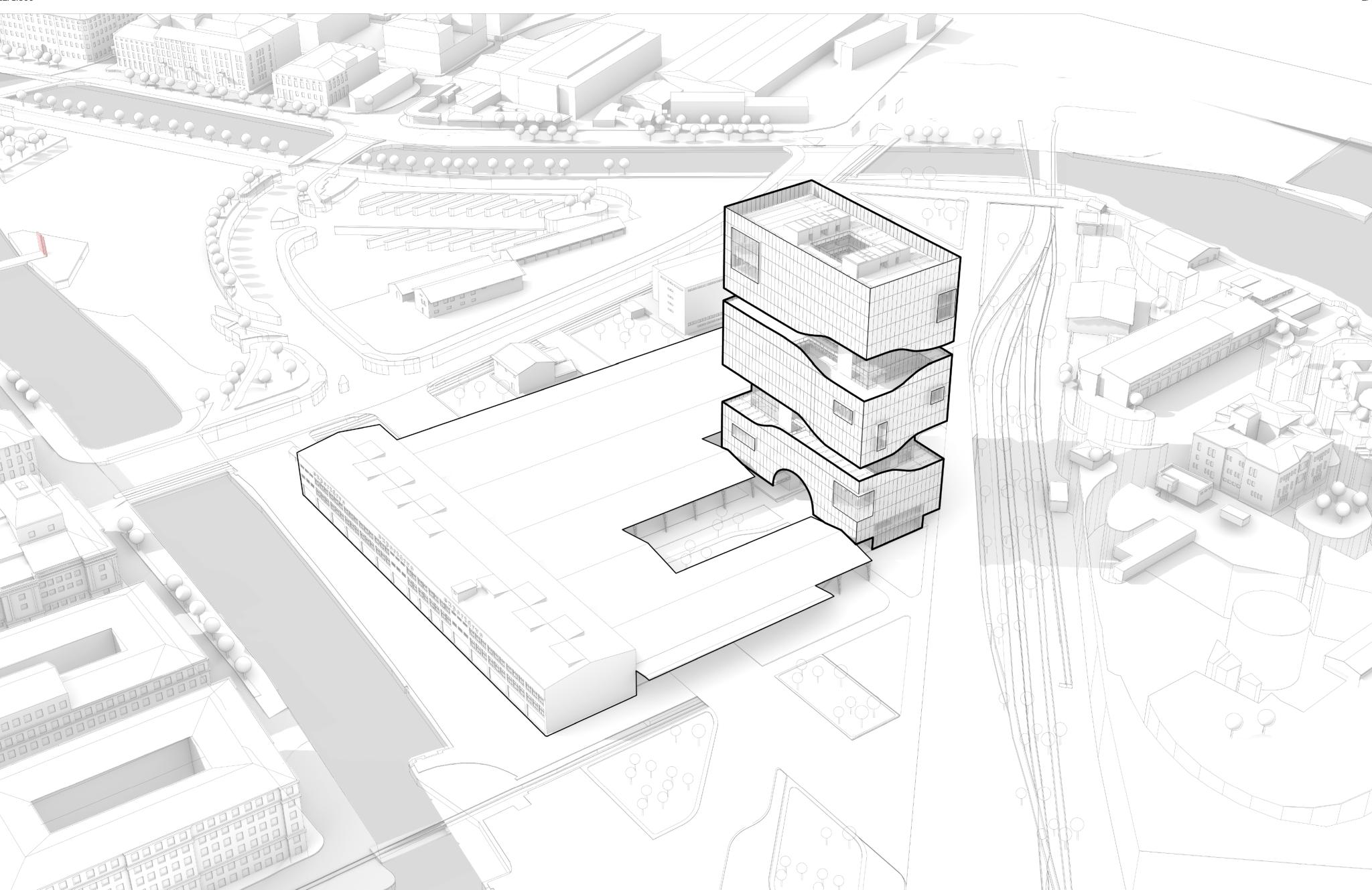
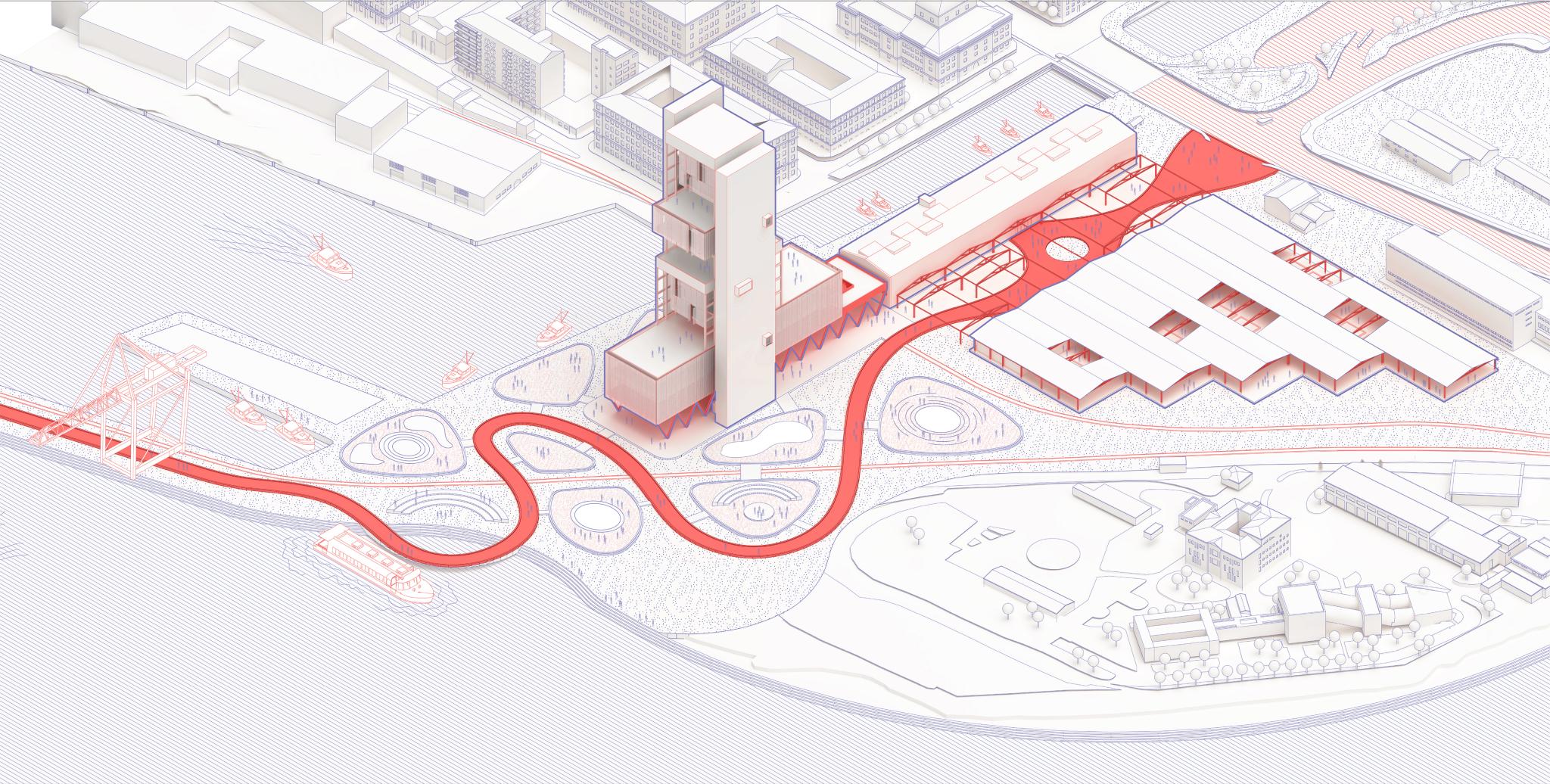
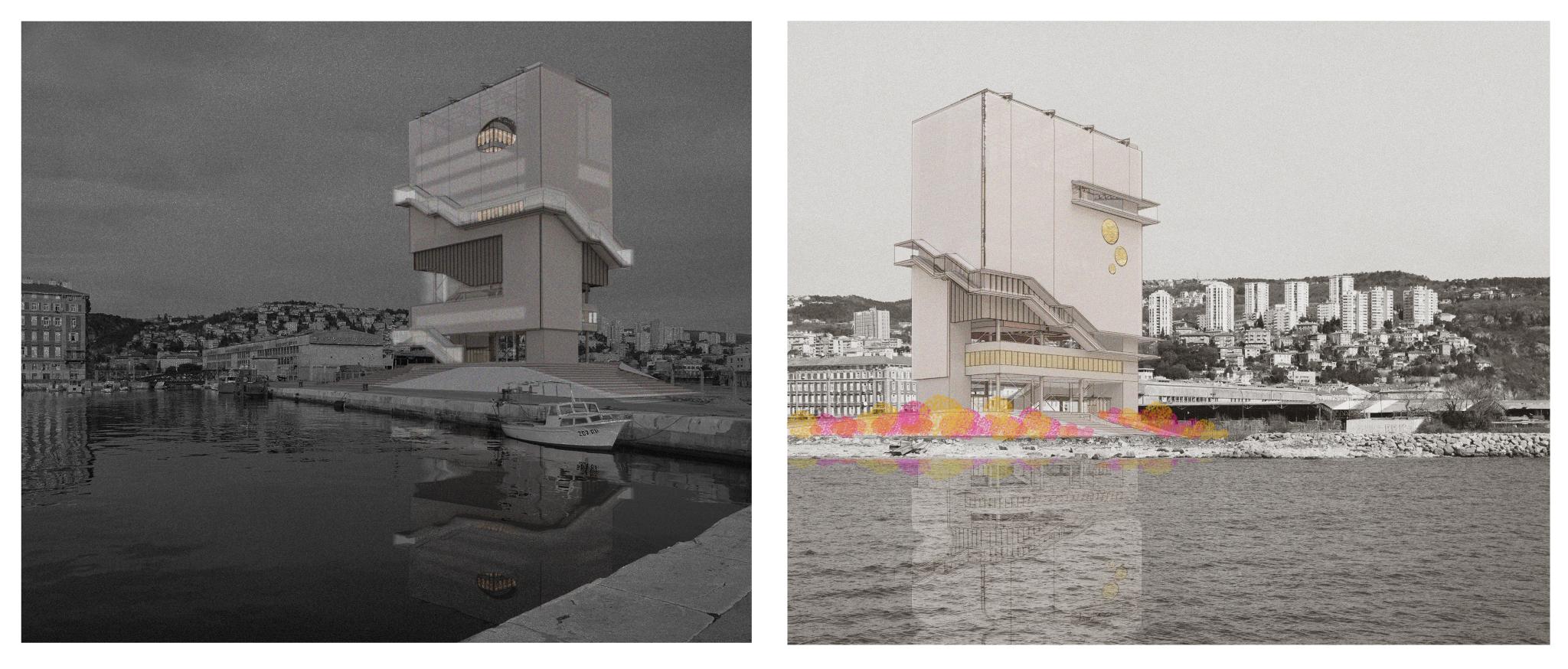
The second proposed site of construction was the former industrial area of Mlaka. Students had to work on the waterfront of the world's first torpedo factory, which revolutionized the maritime military system at the beginning of the last century. The massive former factory is characterized by historically valued shelter structures implemented and expanded towards the sea by different generations. Finally, on the waterfront, an abandoned concrete structure tower used for torpedo launches is rising on a small oblique pier. Similarly to Delta, students reconsidered the heritage, the historical legacy of the site and waterfront morphology, which, in this site, is linearly compressed by the factory until a small internal port for fishermen. The students blended cultural facilities, sports amenities, and community spaces distributed within the new tower and the existing structures, proposing a new hub that aims to foster social cohesion, promote creativity, and reshape Rijeka's social identity in a post-pandemic era.
Students Elisa Locatelli and Elizaveta Danilidi strategically opted to face the tower towards the internal port, defining an introverted square as the main entrance to the site, under multifunctional volumes cantilevered from two central functional cores. The open terraces between the cultural and sports volumes propel social interaction and a brand-new relation with the coastal environment, while the skin of the buildings vibrates with the bora-wind blow. Students Ani Periashvili and Ekaterine Meskhi instead directly integrated the tower into the torpedo factory in relation to the launch turret. The last span of the factory's shelter was uncovered to serve as a broader public promenade under a pergola, becoming a new public spine that connects the horizontal social activities of the bay, the reactivated factory spaces, and vertical cultural programs on the tower. The new landmark condenses cultural, educational, and sports activities. These public programs are connected by external escalators and lifts, translating the technological legacy of the factory into a vertical machine of social flow.
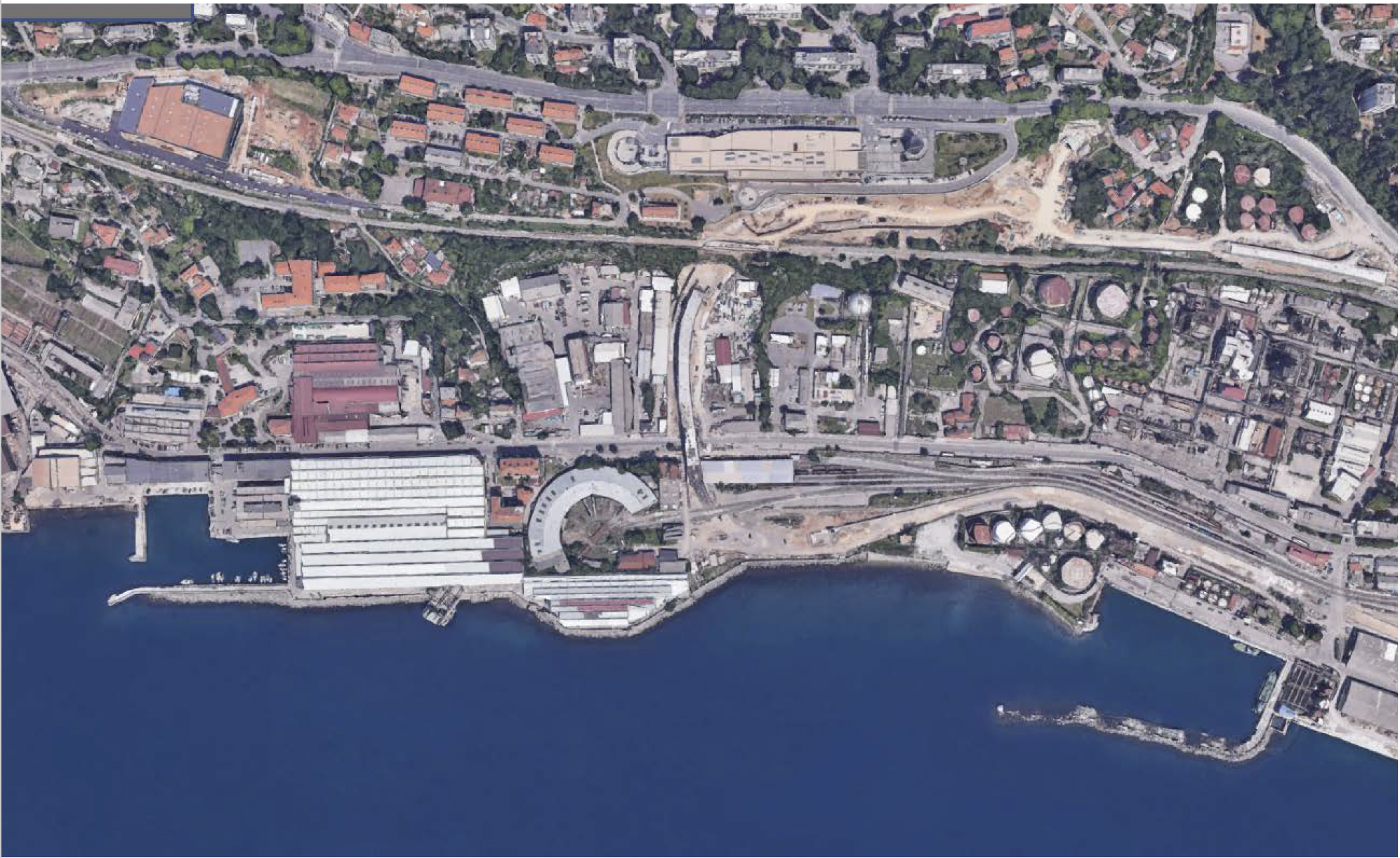
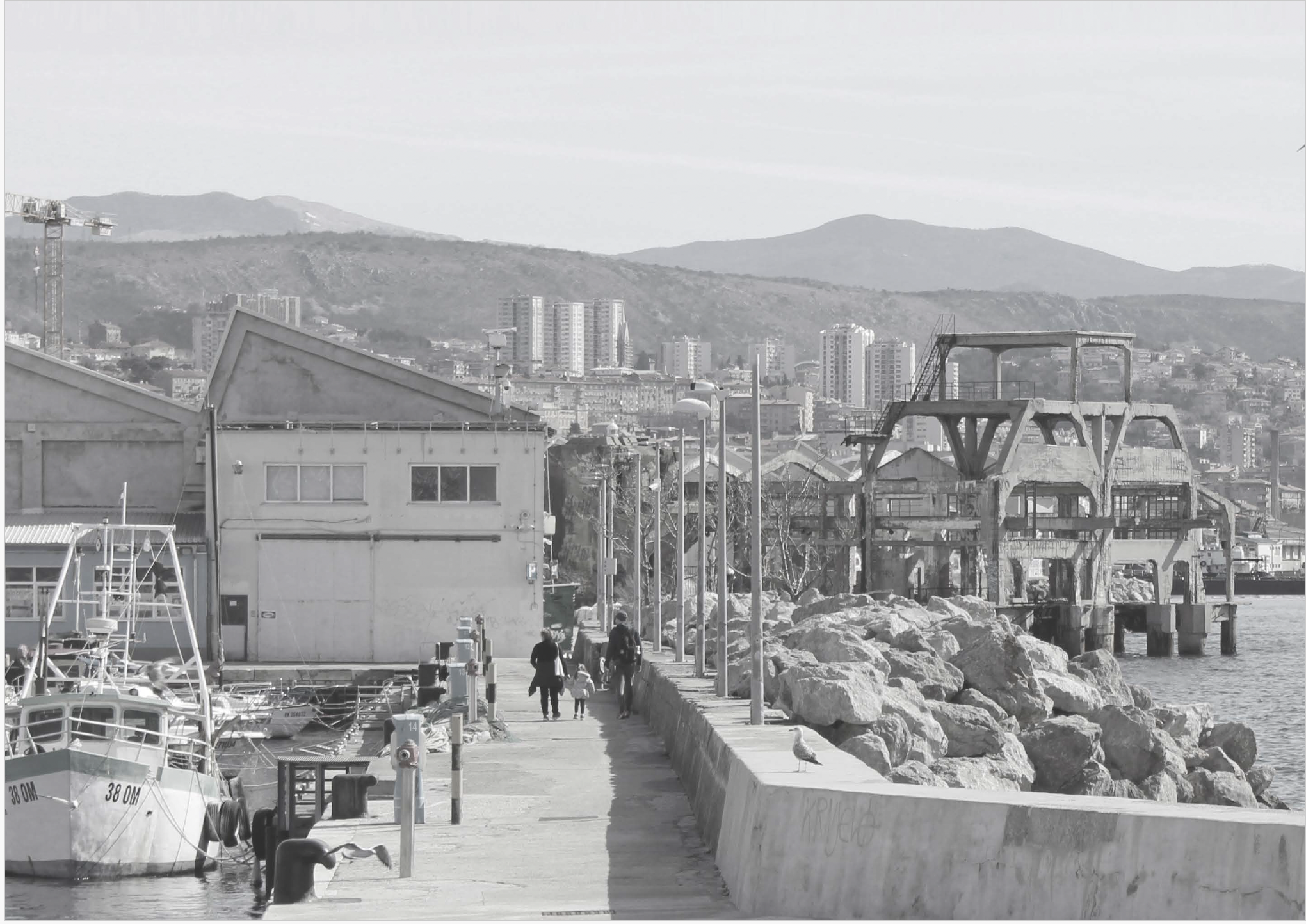
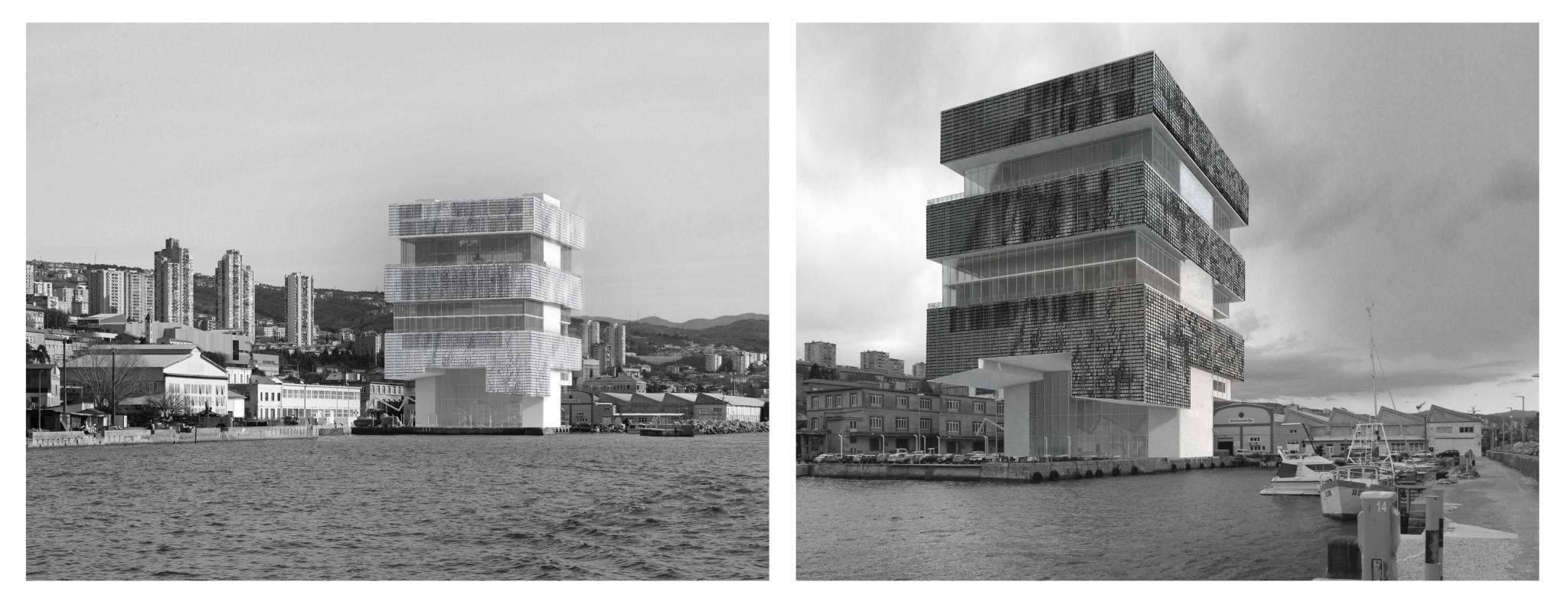
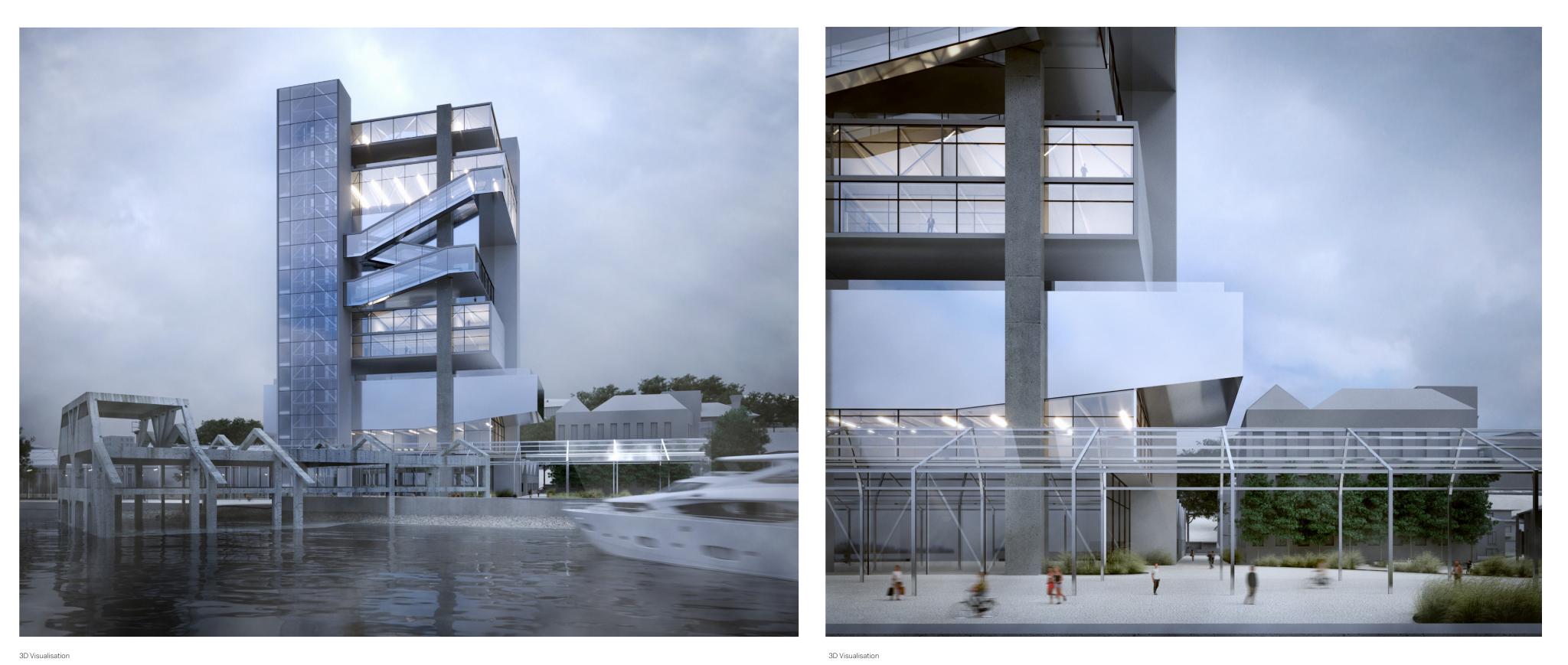
As a conclusion, all these various projects demonstrate that the idea of a ‘vertical city’ continues to stimulate the architectural imagination, no longer on the basis of a tabula rasa of the existing, but on the contrary to regenerate Rijeka's waterfront by enhancing its historical memory as a port city.
Acknowledgments
Pierre Alain Croset, Leonardo Zuccaro Marchi, and Luca Capacci led the Architectural Design Studio at Politecnico di Milano in 2023. The course engaged international students in reflecting on the complex vertical building program in the port city of Rijeka, Croatia.
This blog has been written in the context of discussions in the LDE PortCityFutures research community. It reflects the evolving thoughts of the authors and expresses the discussions between researchers on the socio-economic, spatial and cultural questions surrounding port city relationships. This blog was edited by the PortCityFutures editorial team: Foteini Tsigoni and Vincent Baptist.
